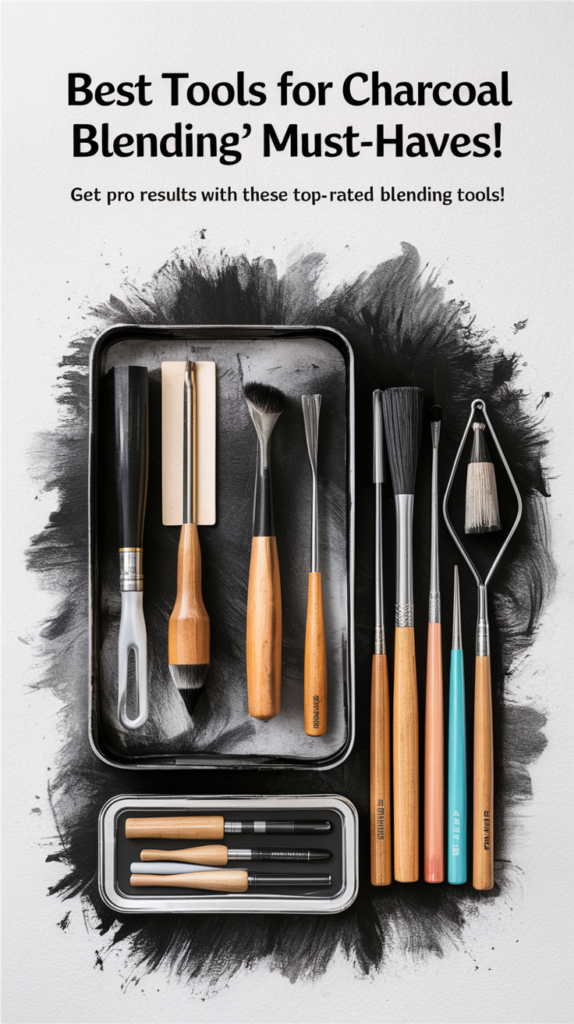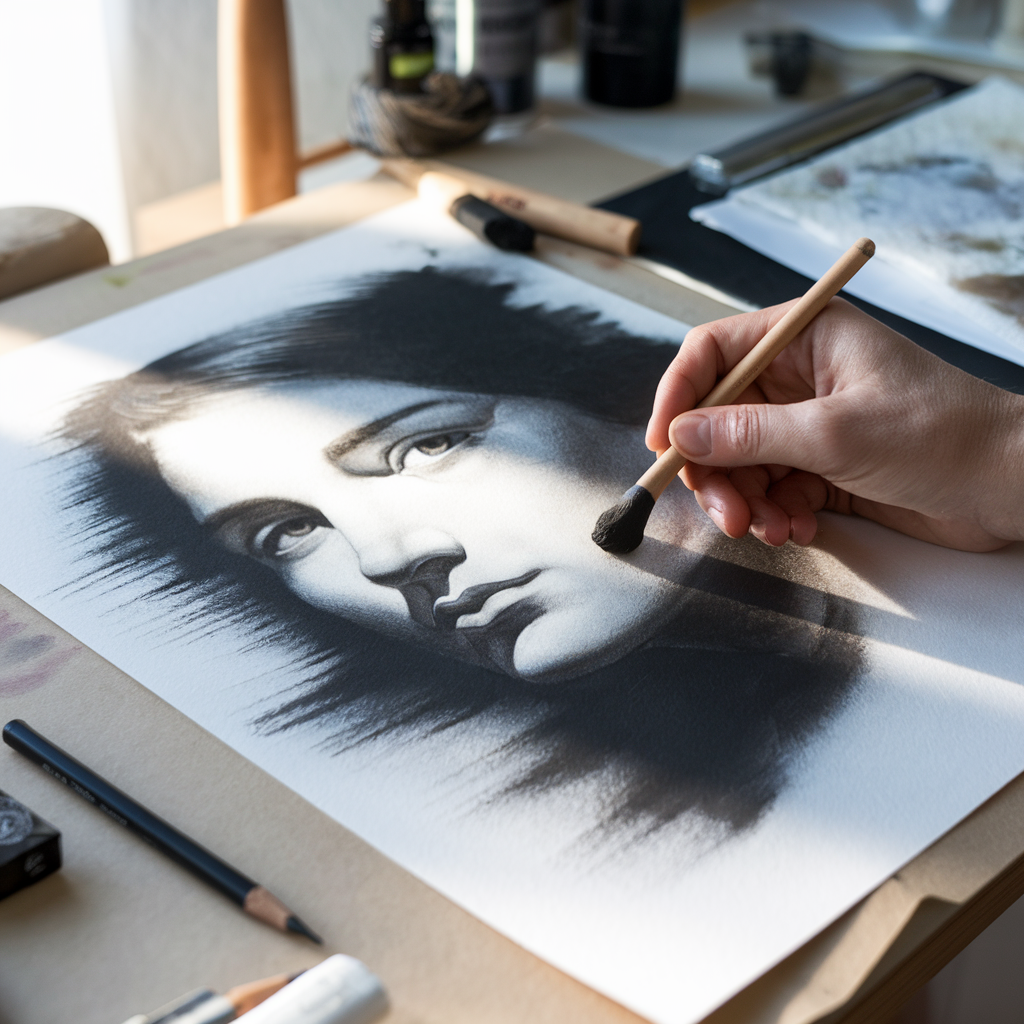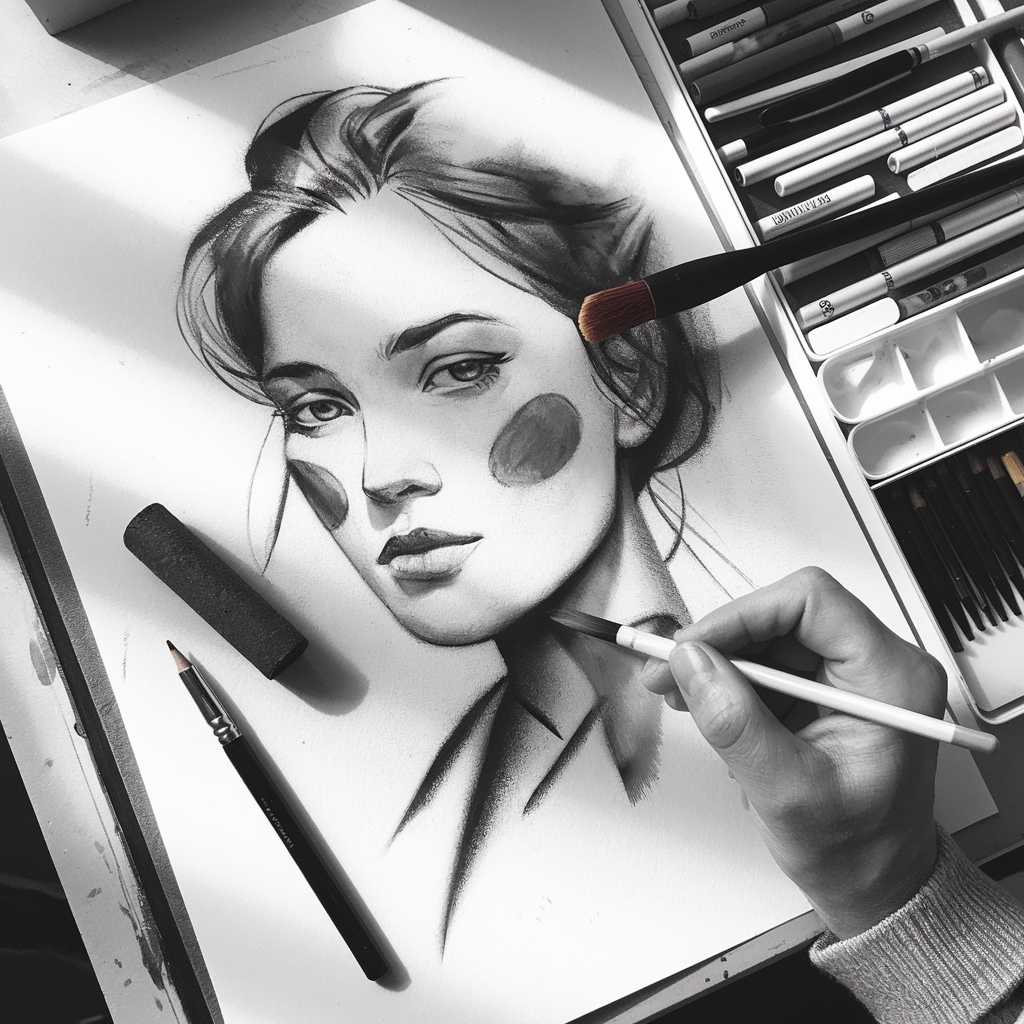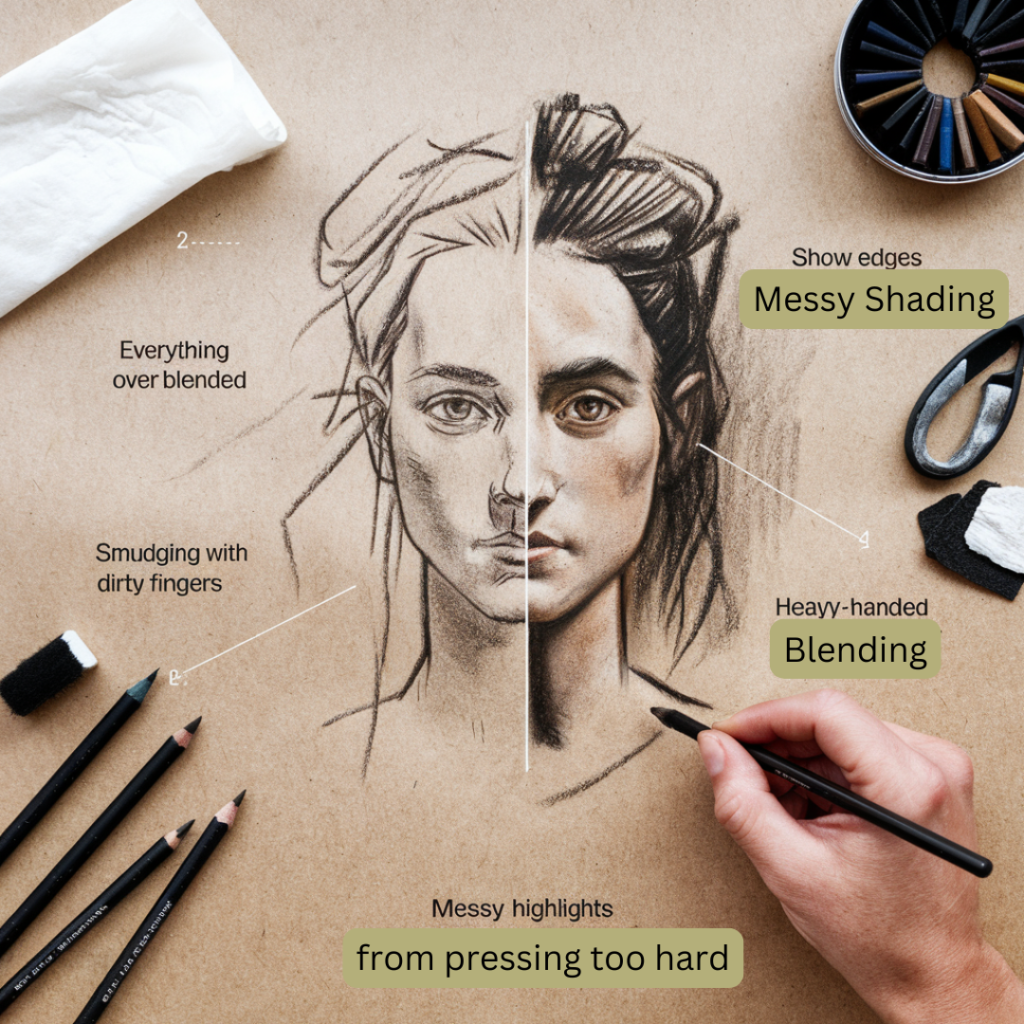Blending is what elevates a charcoal drawing from rough strokes to soft, realistic shading. But if you’ve ever struggled with muddy smudges, harsh lines, or overworked paper, don’t worry—you’re not alone!
In this guide, I’ll show you professional blending techniques to help you create flawless gradients, smooth textures, and dynamic depth in your charcoal art.
Ready to blend like a pro? Let’s dive in! 👇

(This post contains affiliate links, meaning I may earn a small commission at no extra cost to you)
📌 Why Blending is Essential in Charcoal Art
Blending charcoal isn’t just about smoothing lines—it’s a powerful technique that:
✔️ Creates soft gradients for realistic shading.
✔️ Adds depth and contrast to bring your art to life.
✔️ Removes harsh lines for a polished, professional look.
✔️ Enhances textures like fabric, clouds, or skin tones.
But blending the wrong way can lead to smudgy, messy drawings—so let’s make sure you’re using the right techniques and tools!
🎯 Best Tools for Blending Charcoal
Before you start blending, make sure you’re using the right tools for the job:
✏️ 1. Blending Stumps (Tortillons) – Best for Precision
🔹 Great for: Small details, controlled blending, soft edges
🔹 How to use: Lightly roll and twist the stump over your charcoal for smooth transitions.
🛒 Shop Here: Blending Stumps on Amazon
🖌️ 2. Soft Brushes – Best for Gentle Blending
🔹 Great for: Large areas, soft skin tones, delicate shadows
🔹 How to use: Use a fluffy brush to gently sweep over the charcoal for an airbrushed effect.
🛒 Shop Here: Soft Blending Brushes on Amazon
🖐️ 3. Fingers – Natural & Convenient
🔹 Great for: Quick blending, expressive strokes
🔹 How to use: Lightly tap and swirl your finger over charcoal—but be careful of oil transfer!
🛒 Pro Tip: If you use your fingers, wash your hands often to avoid smudging unwanted areas.
🧻 4. Tissue Paper – Soft & Subtle Blending
🔹 Great for: Large areas, soft shading, skies, and smooth textures
🔹 How to use: Lightly dab or drag the tissue over charcoal to blend softly.
🛒 Shop Here: Lint-Free Tissue Paper on Amazon
🎨 5. Kneaded Eraser – Best for Lifting & Softening
🔹 Great for: Highlights, subtle fades, fixing over-blended areas
🔹 How to use: Gently press and lift to soften harsh transitions without erasing completely.
🛒 Shop Here: Kneaded Erasers on Amazon

🔥 Pro Techniques for Blending Charcoal Like a Master
✨ 1. Layer & Build Up Gradually
Instead of pressing hard, apply charcoal in soft, buildable layers and blend as you go.
✔️ Start with light pressure and slowly darken the area.
✔️ Blend in circular motions for a smooth, natural look.
✔️ Avoid over-blending—keep some sharp edges for contrast.
🎯 2. Use Multiple Tools for Depth
Each blending tool creates a different texture, so try combining them:
✔️ Blending stump for sharp edges
✔️ Brush for soft shading
✔️ Kneaded eraser for lifted highlights
This creates a dynamic, realistic look with varied shading!

🎭 3. Work from Dark to Light
Always start blending from darker areas to lighter ones to control contrast and avoid over-softening.
✔️ Place shadows first, then lightly blend outward.
✔️ Use a kneaded eraser to bring back highlights.
✔️ Avoid overworking—leave some crisp edges for realism!
🔥 4. Use Toned Paper for More Depth
Toned paper (gray, tan) allows you to use both black and white charcoal for instant highlights & shadows!
✔️ Mid-tone paper: Helps balance darks and lights effortlessly.
✔️ White charcoal pencil: Adds stunning highlights over blended areas.
🛒 Shop Here: Toned Sketch Paper on Amazon
✏️ 5. Keep a Clean Blending Stump
Blending stumps pick up a lot of charcoal, so clean them regularly to avoid unwanted dark streaks.
✔️ Use sandpaper to gently rub off excess charcoal.
✔️ Rotate the stump to prevent overloading one side.
🛒 Shop Here: Sandpaper Blocks for Blending Stumps
🖤 Common Blending Mistakes (and How to Fix Them!)
🚫 Over-blending everything → Keep some sharp edges for contrast!
🚫 Smudging with dirty fingers → Use a clean tissue or blending stump instead.
🚫 Pressing too hard when blending → Use light pressure and build up layers.
🚫 Skipping the kneaded eraser → It’s essential for lifting highlights & adding texture.

🎨 Final Thoughts!
Mastering charcoal blending takes practice, patience, and the right tools—but once you get it right, your drawings will come to life with depth, contrast, and smooth shading!
🔥 Which blending tool do you swear by? Drop a comment below—I’d love to hear your favorite techniques!
📌 Pin this guide for later & share it with your fellow artists!
[…] If you loved this guide, check out:➡️ The Best Paper for Charcoal Drawings➡️ How to Blend Charcoal Like a Pro […]